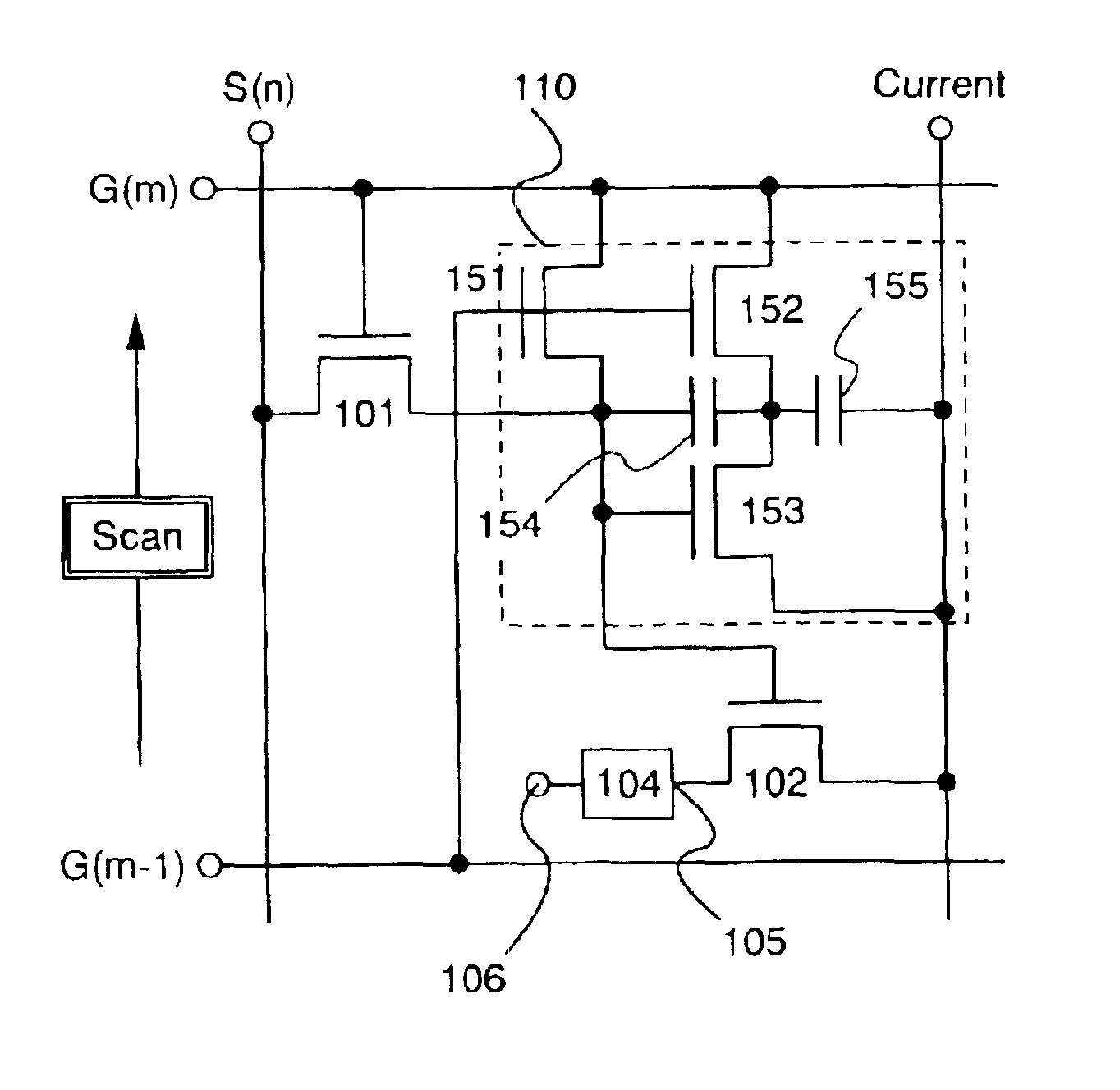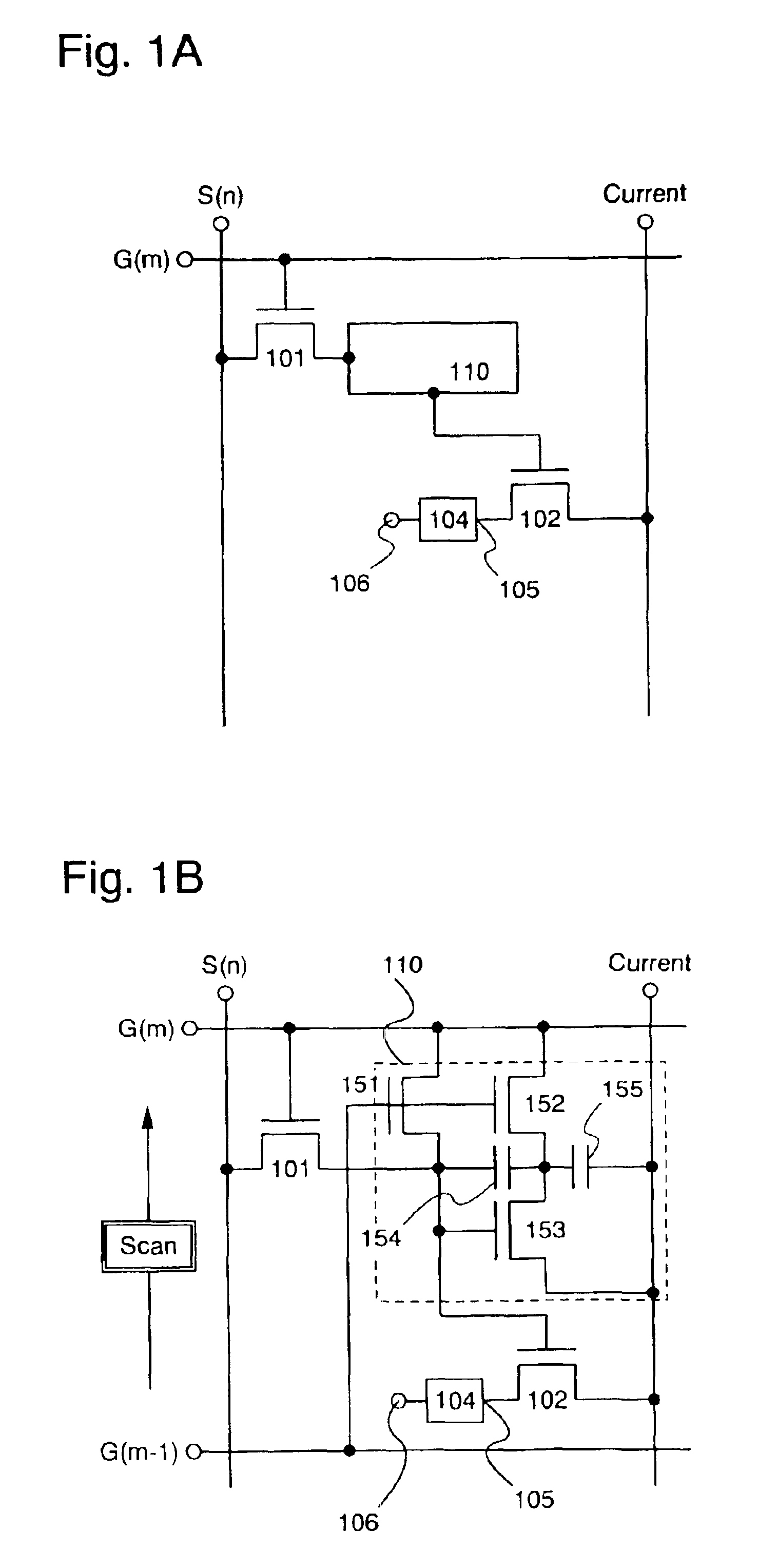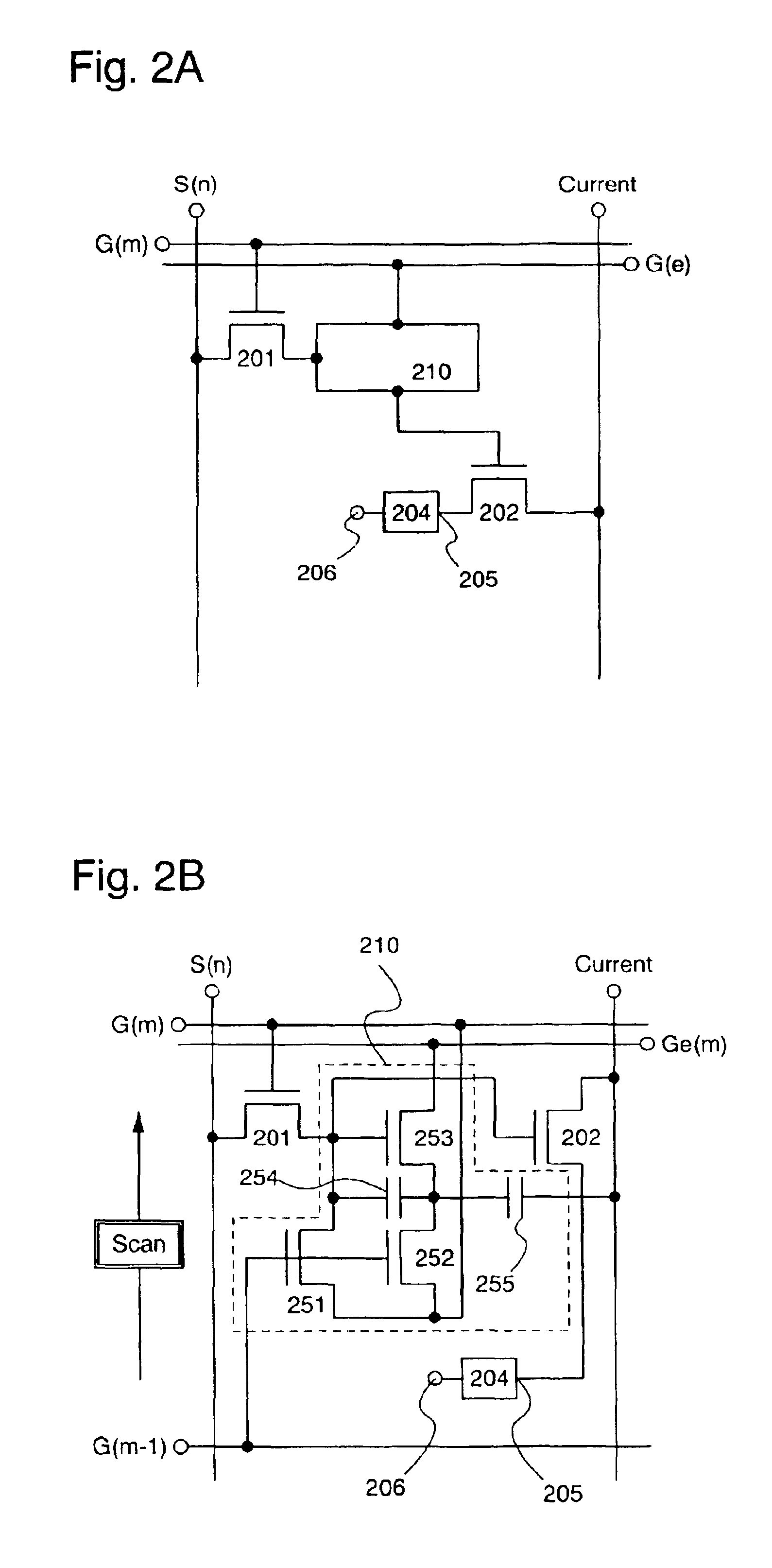Light emitting device
a technology of light-emitting devices and drain regions, which is applied in the direction of instruments, computing, electric digital data processing, etc., can solve the problems of difficult to clearly distinguish between the source region and the drain region of the tft on a structural level, and the structure of pixels cannot be easily influenced by image quality, so as to reduce the number of processes and reduce the electric power consumption
- Summary
- Abstract
- Description
- Claims
- Application Information
AI Technical Summary
Benefits of technology
Problems solved by technology
Method used
Image
Examples
embodiment mode 1
[0090]The structure of a pixel of a voltage compensation circuit of the present invention is shown in FIGS. 1A and 1B. As shown in FIG. 1A, components similar to conventional components are used for a switching TFT 101, a driver TFT 102, an EL element 104, a source signal line (S), a gate signal line (G), and a current supply line (current). The pixel of the present invention has a voltage compensation circuit 110 between an output electrode of the switching TFT 101 and a gate electrode of the driver TFT 102.
[0091]FIG. 1B is a circuit diagram including the structure of the voltage compensation circuit 110. The voltage compensation circuit 110 has a first TFT 151, a second TFT 152, a third TFT 153, a first capacitor 154, and a second capacitor 155. Further, reference symbol G(m) denotes a gate signal line scanned in a number m row, and reference symbol G(m−1) denotes a gate signal line scanned by a number (m−1) row.
[0092]The first capacitor 154 and the second capacitor 155 are arrang...
embodiment mode 2
[0111]FIGS. 25A and 25B show a structure in which a portion differs from the structure of Embodiment Mode 1. As shown in FIG. 25A, components similar to conventional components are used for a switching TFT 2501, a driver TFT 2502, an EL element 2504, a voltage compensation circuit 2510, a source signal line (S(n)), a gate signal line (G(m)), and a current supply line (current).
[0112]FIG. 25B is a circuit diagram including the structure of the voltage compensation circuit 2510. The voltage compensation circuit 2510 has a first TFT 2551, a second TFT 2552, a first capacitive means 2553, and a second capacitive means 2554. The voltage compensation circuit is structured by three TFTs and two capacitors in Embodiment Mode 1, but in Embodiment Mode 2 the voltage compensation circuit 2510 is structured by two TFTs and two capacitors. Further, in FIG. 25B reference symbol G(m) denotes the gate signal line scanned in the number m row, and reference symbol G(m−1) denotes the gate signal line ...
embodiment 1
[Embodiment 1]
[0134]An example of performing SES drive containing an erasure period using a pixel having an added erasure mechanism is explained in Embodiment 1.
[0135]FIGS. 2A and 2B show structures of a pixel having an erasure mechanism of Embodiment 1. As shown in FIG. 2A, the pixel has a switching TFT 201, a driver TFT 202, an EL element 204, a source signal line (S), a gate signal line (G), and a current supply line (current), which are similar to conventional components, and has a voltage compensation circuit 210 that is similar to the voltage compensation circuit of Embodiment Mode 1. In addition to the gate signal line (G), the pixel also has an erasure gate signal line (Ge) in Embodiment 1. Note that, with respect to the erasure gate signal line (Ge), the normal gate signal line is referred to as a writing gate signal line in Embodiment 1.
[0136]FIG. 2B is a circuit diagram containing the structure of the voltage compensation circuit 210. The voltage compensation circuit 210 ...
PUM
| Property | Measurement | Unit |
|---|---|---|
| frame frequency | aaaaa | aaaaa |
| thickness | aaaaa | aaaaa |
| thickness | aaaaa | aaaaa |
Abstract
Description
Claims
Application Information
 Login to View More
Login to View More - R&D
- Intellectual Property
- Life Sciences
- Materials
- Tech Scout
- Unparalleled Data Quality
- Higher Quality Content
- 60% Fewer Hallucinations
Browse by: Latest US Patents, China's latest patents, Technical Efficacy Thesaurus, Application Domain, Technology Topic, Popular Technical Reports.
© 2025 PatSnap. All rights reserved.Legal|Privacy policy|Modern Slavery Act Transparency Statement|Sitemap|About US| Contact US: help@patsnap.com



